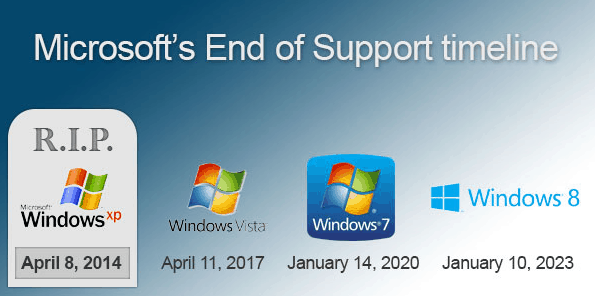With the announcement of Microsoft canceling support for Windows 7 on January 14, 2020, there are a few things that businesses and home users need to know about this event. Luckily Microsoft has given everyone ample time to prepare for this transition and get their operating systems up to speed for the future of computing. This is vital since without updates any computer system is liable to pick up viruses or get hacked due to holes in security. That being said it is estimated that at least 70% of businesses are still using operating systems and software that is out of date.
That figure may seem shocking but when you consider just how many machines are connected to the average large office network it makes sense that such a big job would be put on hold. While it isn’t brain surgery, it still requires a decent knowledge of IT in order to upgrade a computer to the latest operating systems such as Windows 10.
The first thing you need to do is to determine how many machines and systems you have that need an upgrade. If you have gotten any new computers lately they most likely already have Windows 10 installed. For everything still using Windows 7, you will need to make a change sooner rather than later.
The next thing to do is determine whether the flagged machines just need a software upgrade or should just be replaced entirely. It may be cheaper in the long run to get brand new hardware than to pay someone to install new software and find out the old machine doesn’t run it very well. In that case, you would need to buy new computers anyway and just wasted a bunch of money upgrading the old devices. Once the scope of the work has been accessed you can plan how you will fit the cost of software and labor into your budget.
Now you must set up a timeline in order to smoothly transition to the new system and software. The faster you get started the easier this will be and the more wiggle room you will have. You must first have all the new hardware and software installed and in place as soon as possible. It is best to do this in waves and set up intervals in which your staff can learn about the new operating system and software. It can take some getting used to and certain people will pick up on the changes faster than others.
It is also vital to set up extra security and backup any crucial data during this transition. Certain pieces of software and file types may not work as expected on new software. By backing up your data, you ensure nothing important is lost for good. Once everything is safe and secure, you can start moving over copies to Windows 10 and see how they function.
Now all that’s left to do is sit back and enjoy all the new features and benefits of Windows 10. It is a powerful operating system and the best part is you can continue to use it for many years to come. Microsoft has implemented a new policy with 10 called Windows as a service. This means that all future updates will continue to work with Windows 10 even if they dole out new software. This is great news for businesses since they won’t ever have to put up with the headache of switching operating systems again.


